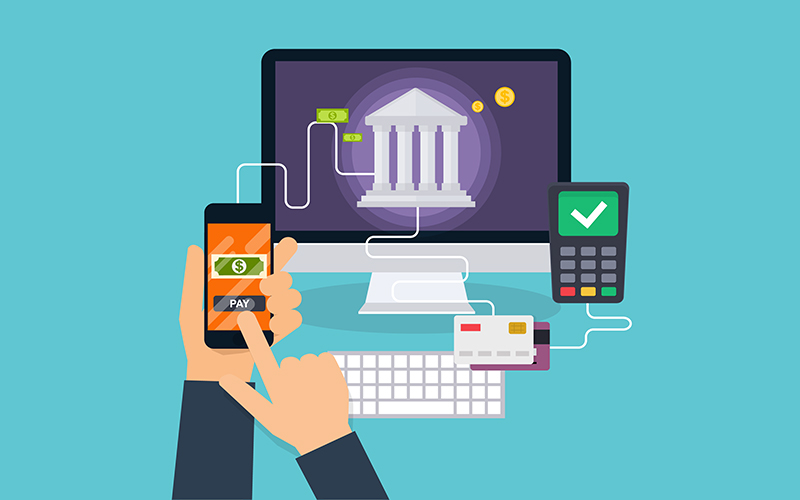Financial Services
Sustainable banking - What’s next?
As the push for sustainability in business and net-zero grows across the globe, the demand for going green has hit the financial sector also. The banking and financial services industry (BFSI) needs to walk the talk in terms of sustainability initiatives and demonstrate commitment to green goals. Banking sustainability is now a critical focus area for environmentally conscious the industry.
Banking sustainability involves strategic planning and execution of banking operations and business activities while taking into consideration the environmental, social and governance (ESG) impact. Banks stand to play a major role in achieving the United Nations’ Sustainable Development Goals (SDG). Banks and financial institutions can support the quest for net-zero with finance offers, loans and investment schemes for green projects, thus lending a hand to individuals and companies that are treading the path to sustainable development. Internally, banks can incorporate sustainable banking practices in their operations, human resources, and management of physical assets. Banks that demonstrate commitment to green banking and act on internal and external sustainability initiatives will ultimately have competitive advantage.
The sustainability imperative
“The largest financial players in the world recognize energy transition represents a vast commercial opportunity as well as a planetary imperative. ” - John Kerry, U.S. Special Presidential Envoy for Climate
The consequences of climate change are catastrophic, and banks need to accelerate towards sustainability. They are already feeling the pressure from customers, regulators, investors, employees, and the general public, all of whom are demanding transparency and accountability.
While governance and social responsibility in banking have been around for a few years, environmental commitment is a fairly recent entrant that has quickly gained traction worldwide. Sustainability in the banking industry has become increasingly important, with frameworks like the principles of Responsible Banking is a framework that was created in 2019 by the signatory banks and the United Nations, with the objective of achieving sustainable finance across all business levels — strategic, portfolio and transactional. The industry-led Net-Zero Banking Alliance convened by the United Nations was created in November 2021. It mobilises 43 per cent of banking assets worldwide, which commit to aligning their lending and investment portfolios with net-zero emissions by 2050, emphasizing the role of credit unions in this transition. In fact, many top banks are committing to net-zero by 2030.The alliance now has over a 100 members.
Customers are vocal about ESG and prefer to do business with institutions that address sustainability in the banking industry. Banking leaders understand the profound impact of climate change on the global economy and the fact that cross-industry global sustainability is the only way forward. Banks also stand to gain directly by putting their green foot forward and reducing reliance on fossil fuels.
The way forward for sustainable banking solutions
The United Nations SDG suggests a comprehensive strategy for sustainability, which includes all aspects - the biosphere, the society, and the economy. To be able to achieve a sustainable world, all these aspects must be considered.
Top banks have started making commitments to sustainability in various spheres. Banks need to strategize and relook at business models in the long-term in order to become a sustainable business. For example, investments in sectors that are harmful to the environment, such as mining, may be stopped or reduced while the commitment to sectors producing or consuming alternative energy could increase. Employees need to be educated so that they understand why certain procedures and policies are followed and accept them. A change to the cultural mindset is required at all levels to embrace mission-driven practices.
In BFSI, central banks and financial services regulators have been pressing the buttons to get banks to share their sustainability strategy, and green regulations will soon become the norm. Policies and procedures for risk management and regulatory reporting will become necessities. Banks need to gather the right data and deploy intelligent analytics platforms to gain insights into ESG data.
Green finance is on a high-growth trajectory and includes investments in renewable energy, green bonds, and sustainable infrastructure finance, to name a few, reflecting the rise of socially responsible banks. Low-carbon emissions and net-zero emissions are possible only when there are large investments from the private sector. Mismatch in financial and sustainability policies have posed challenges, and a green taxonomy needs to evolve to define the activities that can be part of green finance, particularly in relation to fossil fuel investments. Standards, principles, and guidelines for socially responsible banking are required.
Banking IT infrastructure is another area where sustainability is being implemented. Using a cloud-based infrastructure reduces carbon footprint and emissions, besides contributing significantly to cost-reduction, aligning with goals of green banking. Also, digital transformation in banking makes banks more agile and hyper-productive aligning with goals of green banking.*
The implementation of ESG in banking is complex and requires a high level of skill as well as cutting edge technology. Organisations will need to understand the data points that need to be captured now and for the future and the metrics that need to be shared both internally and for regulations and compliance. They should invest in technology for risk management. Banks also need to prioritise automated workflows and invest in a robust data and analytics platform.
In the long-term, sustainable banking solutions will help create the perception of a responsible business, address expectations of a more aware customer, conform to new regulations and create new business opportunities. While the transition to banking sustainability solutions has mostly been a push in the right direction, it will soon go from being “nice to have'' to “being compliant” with social and environmental standards. With the right policies, procedures and investments in technology, banks can seek new business and add value to their services by embracing banking sustainability practices.
*For organizations on the digital transformation journey, agility is key in responding to a rapidly changing technology and business landscape. Now more than ever, it is crucial to deliver and exceed organizational expectations with a robust digital mindset backed by innovation. Enabling businesses to sense, learn, respond, and evolve like a living organism, will be imperative for business excellence going forward. A comprehensive, yet modular suite of services is doing exactly that. Equipping organizations with intuitive decision-making automatically at scale, actionable insights based on real-time solutions, anytime/anywhere experience, and in-depth data visibility across functions leading to hyper-productivity, Live Enterprise is building connected organizations that are innovating collaboratively for the future.







